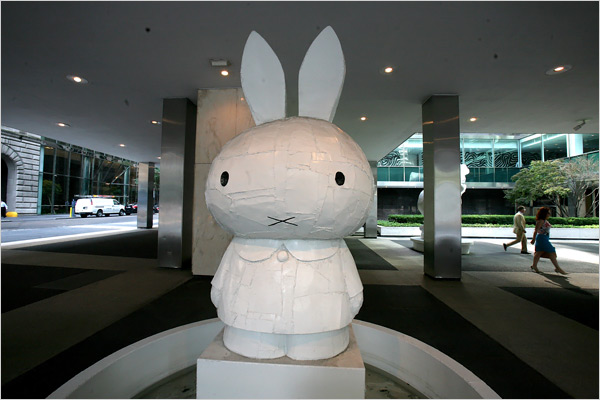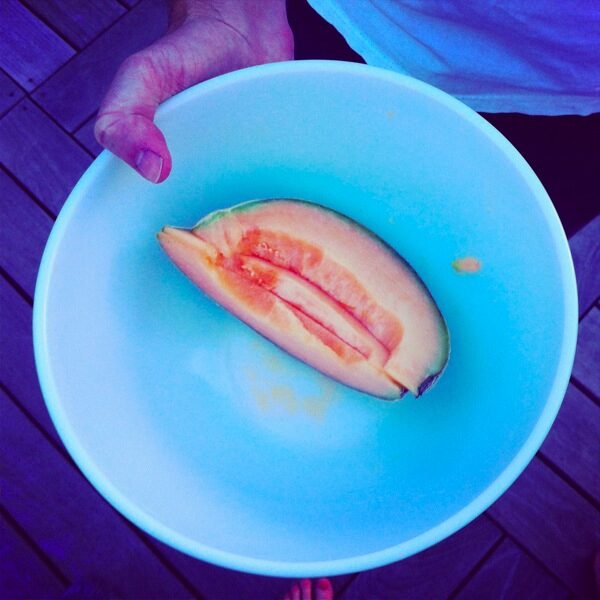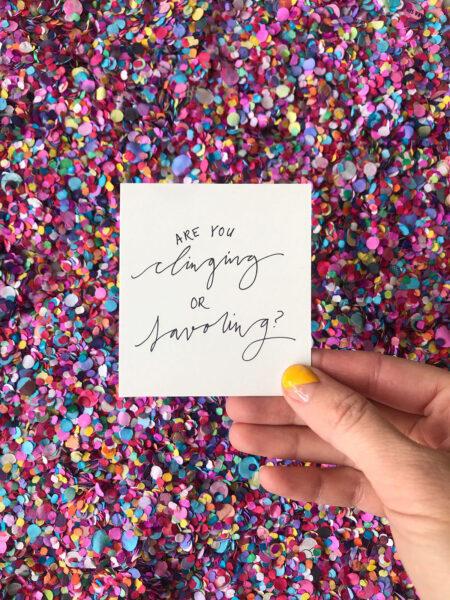The joy of outdoor art
Today’s NYT has an interesting article by Ken Johnson on outdoor art, suggesting that there has been a thematic shift from grand, ideological monuments to works that are designed simply to “divert, amuse, and comfort.” But is there really anything wrong with that?
Johnson writes:
The big problem for outdoor art is the absence of any consensus of values in our pluralistic, multicultural society. It’s hard to imagine a public sculpture of a hero today that would not be regarded by one faction or another as partisan. As an unscientific sampling of art in the public realm this summer confirms, contemporary outdoor art tends to offer unobjectionable, mildly decorative or entertaining and relatively empty experiences.
To me, this conflates two separate questions into one murky discussion. First, what is public art for? And second, is the art any good?
The first is a theoretical question about why we make and commission art and what we seek in the experience of art that inhabits public spaces. It opens the door to a worthwhile examination of cultural values and Johnson’s comparison of Saint-Gaudens’s Sherman monument with the adjacent colorful Franz West sculpture illustrates his point nicely. No doubt there’s been a values shift, but I wonder if it’s not so much the fact that multiplicity makes it hard to commemorate our heroes, but that outdoor art no longer is the primary way in which we achieve this end. Think of the Shepard Fairey Obama poster and you’ll know what I mean. In the olden days, people gathered in public squares, and statues were a way of keeping an image in the public consciousness. Now, people still gather in squares, but mostly for recreation; they do the bulk of their thinking and communicating and even rallying online, and images that stick in the public mind now are frequently discovered and recirculated there.
I’m not saying that a million YouTube hits has the commemorative value of a bronze monument; my point is rather to suggest that the way we use public space is mostly geared towards leisure, so it makes sense to me that enjoyment would be a driving factor in selecting work for this realm. When you leave your office building for your 10-minute “lunch hour,” what would you rather see: a fearsome general in smiting posture, or a bunch of children playing hide and seek around a colorful set of forms? Perhaps this is selfishness, to prefer to have art that brings us enjoyment over art that honors the sacrifices of others. But perhaps it’s just human.
Joy has an important place in urban outdoor art because our limited open space is vital to our mental and emotional wellbeing. I don’t think it’s always a conscious criterion of those that commission such works, but certainly many artists derive pleasure from creating works that inspire nothing more cerebral than delight. And yet, delightful can also be meaningful. There’s no law that says that only somber works have intellectual value. (If there were you might have to banish the Impressionist wing of the Met from school field trips.) Joy is a constant human craving, and much of the artistic experience is to celebrate and revel in this.
Agree or not that joyful art has an important role in the world of public sculpture, the question of quality is still a separate issue. Johnson’s veiled derision suggests he does not think many of these works are very good. Commenting on the Afterparty installation by MOS in the courtyard at PS1, Johnson writes with tepid enthusiasm, “it nicely exemplifies the inoffensive spirit of public art today.”
But inoffensive is not in and of itself bad. Not all art has to provoke, particularly in public spaces which are primarily for enjoyment. This does not forgive weak execution, but suggests artists and curators do better to make the reality as joyful as the intent.
NYT: “Well-Behaved Street Corner Sculpture”
PS: I have to add that I intensely dislike that installation at PS1. I know it’s trying to be all Bedouin-tent-y, but I find it kind of dank and Hobbit-like and totally in keeping with the cranky weather of this summer. It may be inoffensive to my dignity but it affronts my senses. I’m sorry, I like you PS1 but I don’t like that.






Leave a Comment